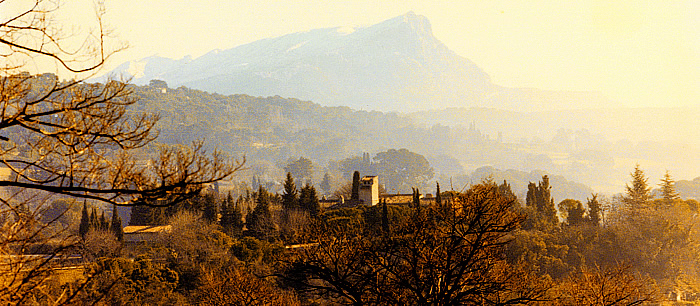

 |
 |
|||||
|
|||
Looking for Cézanne... |
|||
|
|||
Liberation
has exacted a terrible price, values have been relativized, a "Nietszchean
Umwertung aller Werte" resolves itself into a price tag based
on marketing and opinion polls. The soul "cela n’existe
pas". Cézanne’s atelier speaks louder and
more authentically of the artist than all the addresses, schools,
family banks and hat
shops to which he preferred the pines, the red earth, and the countryside
along the route du Tholonet, the route
de Vauvenargues, and the valley of the Arc river. |
|||
|
|||
About
half way between Aix-en-Provence and the village of Le Tholonet a
stone marks the spot from which he painted one of his best known canvases.
A hundred years of natural growth has drawn a curtain across the motif
but, in passing beyond it, the distance between foreground and mountain,
shrunken in his painting as by the magic of the telephoto lense, allows
us to share a small but essential part of his vision. The same startling
immediacy is rendered in his 1896 canvas of the château de Duingt
viewed from Talloires across Lake Annecy. Suzanne Lansé, the
acknowledged maître of the Alps, sees the château as a
speck on a headland jutting into the lake. Cézanne, for whom
the majesty of the high alps was a painful homesickness (dépaysement)
declares in a letter to his friend Philippe Solari that he does "a
little painting to pass the time". His dramatic rendering
of the view, while it appears to cast doubt on his judgment, confirms
what
we know of his tendency to self depreciation, a convenient defense
for his extraordinary inner strength and farouche originality. |
|||
 |
|||
|
Aix-en-Provence |
Practical info |
Kiosk |
Entertainment |
Art Gallery
Learning | Maps | Camargue | Short cut | Homepage | Post-box |
Copyright © Provence Live 2011